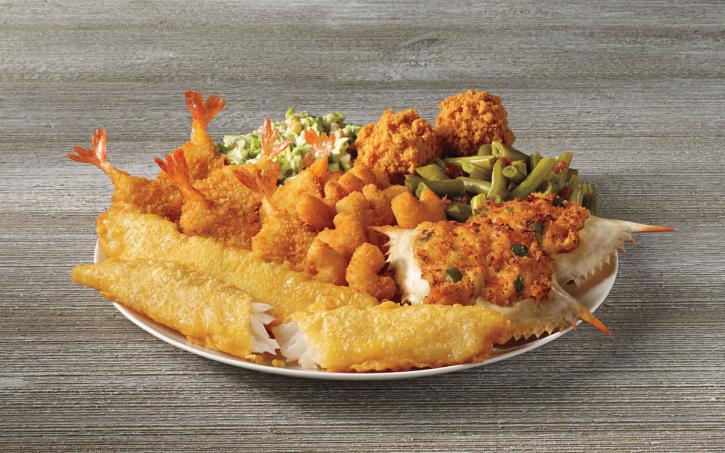
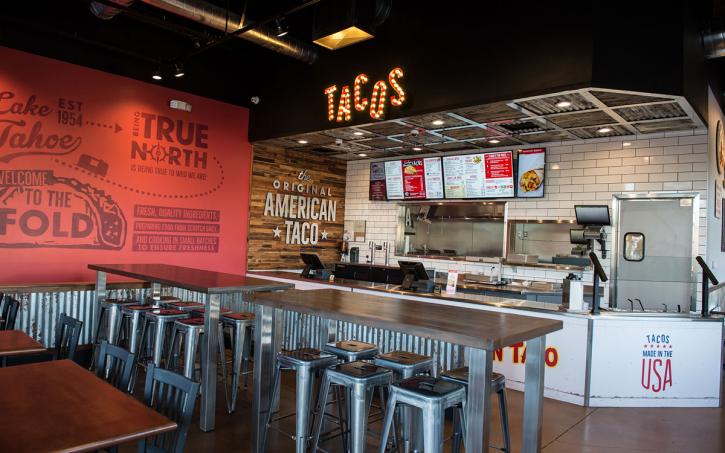
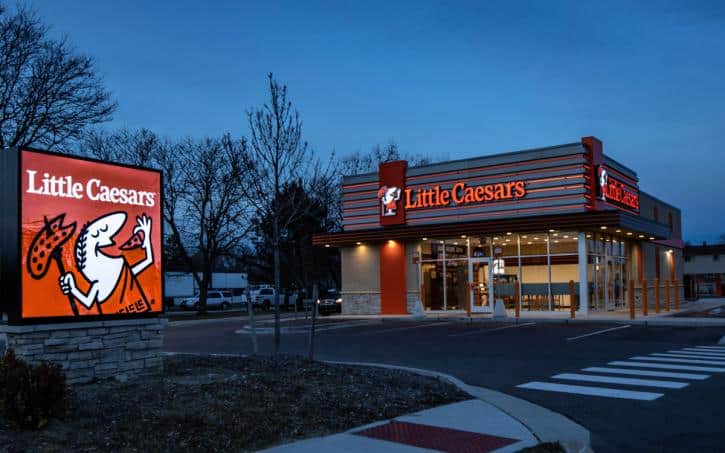
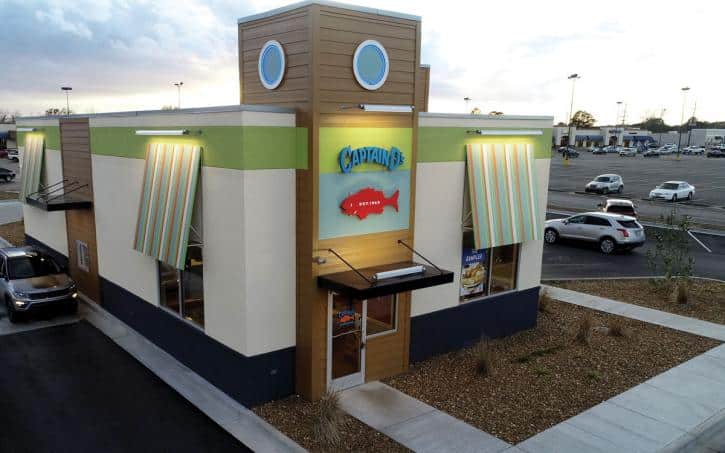
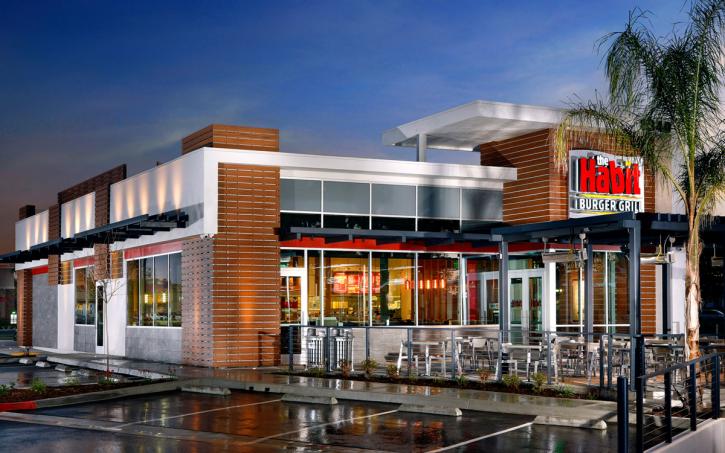
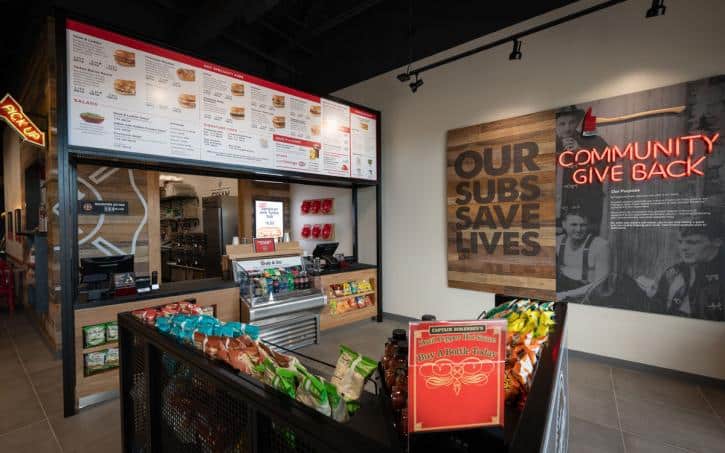
Every day in the industry, new brands are breaking onto the scene, capturing the attention of younger generations with their cutting-edge technology, social media savvy, and of-the-moment menus. But that’s not to say old brands can’t learn new tricks. Although the following five concepts are celebrating more veteran anniversaries this year, they’re not planning to stick to the same old routine. Here’s a look at how they’re innovating today to capture the customers of tomorrow.
READ MORE: See where the industry stacks up by sales, AUV, unit count, and more.
Jimboy’s Tacos
65 years
In its six-and-a-half decades of existence, Jimboy’s Tacos has experienced its fair share of firsts. Launching as a food trailer back in 1954, it was one of—if not the—first food trucks in America, one of the first U.S. brands to put tacos on the menu, one of the first to pull off fusion cuisine, and one of the first companies to franchise its concept. But Jimboy’s firsts aren’t stopping there—though they are setting the brand up for continued success.
To attract and retain a younger generation of guests, the concept recently launched its first system-wide rebrand, with nearly half of its 40-plus locations already receiving the new design. Switching from an old-school Aztec theme to a more modern look, Jimboy’s incorporated communal tables, a black-and-white mural of founder Jim Knudson, and historical photos of the brand to better illustrate its legacy. “You’re reminded right away of our story, where we came from, and who our founder is,” says Dina Guillen, Jimboy’s director of marketing. “Everything we did in rebranding our restaurants was really trying to evolve from an older brand and bring in that new way of looking at us.”
The West Coast concept is also investing heavily in technology, with fresh POS systems and digital menuboards, a new mobile app, a loyalty program, and online ordering, all while developing its delivery offering, too. “It’s all about technology right now, and convenience for the customer,” Guillen says. “How do we make their experience easy, fast, and convenient? Technology is the answer for that.”
To prep for the future, Jimboy’s is also stepping up its digital and social marketing efforts by relying on millennial and Gen Z influencers to create buzz for the brand. This includes working with bloggers to create viral videos of mashup products—like the uber-popular Taquito Burrito—and helping Jimboy’s break into new markets, as it did last year in Southern California. “Before we opened each restaurant, we would invite them to come and do private food-tasting events, where we encouraged them to create their own mashups and post about them,” Guillen says. “Without them, we wouldn’t have been as successful as we were.”
Little Caesars
60 years
That trope about older generations not understanding technology? It certainly doesn’t apply to 60-year-old Little Caesars, a brand that’s embracing—perhaps even pushing the envelope on—all things tech. Case in point: The recent system-wide rollout of its Reserve-N-Ready platform. Also known as the Pizza Portal, the device allows customers to place an order on the Little Caesars mobile app, arrive at the store, and retrieve their items from a heated locker using a custom three-digit code. “It’s the fastest way to get food in any quick-service restaurant,” says president and CEO Dave Scrivano. “It takes about three seconds to get your pizza.”
Serving quality pizza at a low price with easy accessibility is what Scrivano sees as the key to Little Caesars’ longevity, both in its six-decade history and looking forward to the next 60 years. “In our initial consumer tests, the Pizza Portal rated off the charts in terms of having all those attributes—convenience, technology, getting to skip the line, not having to talk to the counter person,” he says. “Things that today’s millennials and Gen Z are really looking for.”
The brand is also scaling down with Express units, which it hopes to place in densely populated markets like New York and San Francisco, where there’s little space to be had and real estate comes at a cost. In addition, Little Caesars is testing third-party delivery to continue meeting the needs of its convenience-seeking customers.
Technology is also at play in the company’s new Detroit headquarters, which features a state-of-the-art test kitchen, complete with QA, sensory, and IT labs, plus focus-group rooms and plenty of space for R&D. It was here that the team came up with its Impossible Supreme Pizza, featuring Impossible Sausage, sautéed onions, peppers, and mushrooms. The vegetarian option is being tested in three markets before rolling out on a wider scale. “Product innovation will never end, and we’ll always adapt to consumer needs,” Scrivano says. “What are the newest flavors? What’s the latest trend? We want to stay ahead of that.”
Captain D’s
50 years
What does Captain D’s CEO Phil Greifeld believe will set the brand up for another 50 years of success? Exactly the same thing that got it this far: its ability to carve out—and maintain—a niche in the industry. “I consider us in a category of one,” he says. “There is no one in America doing what Captain D’s is doing. There is no one providing guests quality seafood at every-day, affordable prices.”
Moving forward, Greifeld says, the company will continue to “democratize seafood” by making it affordable for guests seeking an alternative in a world filled with burgers, sandwiches, and pizza. To do so, Captain D’s is getting the word out to consumers across the country, recently launching its first-ever national media campaign.
After its purchase by private-equity firm Sentinel Capital Partners in late 2017, the concept also went about changing consumer perception in an attempt to guarantee its longevity for the foreseeable future. This included a system-wide redesign and the rollout of a fresh lineup of grilled items—including Wild Alaskan Salmon, Blackened Tilapia, and Lemon Pepper White Fish—all in an effort to appeal to the millennial and Gen Z desire for healthier options.
But it’s not just about drawing younger consumers to the brand. For Captain D’s, it’s also about attracting and retaining them as part of the team—something that’s become more critical for all brands, thanks to the increasingly tight labor market. “Whether it be five years from now, 10 years from now, or 50 years from now, it’s still going to be a guest-centric business driven by engaged people,” Greifeld says. That’s why the brand—which was recognized as one of Forbes’ best midsize employers of 2019—has invested heavily in employee-development programs for everyone from hourly associates and shift leaders to general managers and area directors. “We always make sure we’re isolating the best talent and grooming them to put them on a career progression plan whereby they can see the pathway to advancing themselves,” Greifeld says.
For millennials and Gen Z in particular, Greifeld says these employees want to work for brands that have meaning, purpose, and an understanding of their needs. Captain D’s ticks these boxes by serving only sustainable seafood, better-for-you items, and—for team members—more flexible schedules. “When you do that, you get very loyal people,” Greifeld says. “Your retention improves tremendously, and it becomes much easier to recruit because you’re recruiting from within.”
The Habit Burger Grill
50 years
Much like Captain D’s, California-based Habit Burger is celebrating five decades in business—and ensuring many more—by focusing not just on the future, but also on the people who will get it there. “At the end of the day, we’re firm believers that the customer experience never really exceeds the employee experience,” says CEO Russ Bendel, adding that the company is setting itself up to thrive by recruiting and retaining quality employees from the millennial and Gen Z talent pool.
To this end, the company has developed a custom-built, web-based training solution that provides team members with a clear picture of their career progression, as well as the development tools to help them achieve it. “We put a lot of resources against the ongoing personal and professional development of people in our organization—not only at the management level, but also at the hourly level, both front of house and back,” Bendel says. “We have always felt that we’ve been a really good place to work, and our turnover numbers bear that out.” He adds that its general manager turnover rate is holding steady at just 15 percent.
When it comes to customers, Habit Burger plans to meet them where they are—at the crossroads of speed, quality, and convenience. To that end, the company is getting into the delivery and drive-thru games, partnering with DoorDash and Postmates for third-party delivery and adding drive thrus to nearly 50 of its locations. “You look at millennials, and they are certainly using restaurants differently than other generations have,” Bendel says. “It’s a convenience economy, and you have to look at how people want to access your brand and how you take the friction out of the ordering process, whether it be with a mobile app or drive thrus.”
On the menu side, Habit Burger will continue to expand its offerings beyond just traditional burgers and fries. Although 60 percent of its entrées come from a range of chargrilled burgers, Bendel says, Habit Burger’s menu is much broader than many better-burger brands, thanks to items like the Ahi Tuna Filet Sandwich, Portabella Charburger, and Tempura Green Beans. “We’ve always had that broad menu and veto-vote thing we work hard at,” he says. “It all starts with good, fresh ingredients, but then it’s really about the care and attention that we give to that product.”
Firehouse Subs
25 years
Firehouse subs is tweaking its throughput model as more customers order through third-party delivery.
After its dine-in business peaked in 2012—thanks in large part to the lucrative rollout of Coca-Cola Freestyle machines—Firehouse Subs customers became much more interested in off-premises dining.
“Ninety percent of our business used to happen in front of us at the cash register,” says CEO Don Fox. “Now it’s less than 75 percent of our business, so it’s a very dramatic change.”
Rather than trying to draw guests back into its stores, Firehouse decided to go to them instead, partnering with a number of third-party delivery services such as Uber Eats, DoorDash, GrubHub, and Postmates. The company also launched its Rapid Rescue program, in which customers order and pay for their items online, then grab them from a rack by the door for quick and easy pickup. “It seems so basic, but it’s still something I notice a lot of brands don’t execute very well,” Fox says. “It’s just a matter of making sure the product is as close to the door as you can get it, and being more concerned about customer convenience than the fear of theft.”
READ MORE: Inside Firehouse’s biggest redesign in 25 years.
Because it can take nearly 3 minutes for Firehouse’s subs to be made, Fox says the brand often wasn’t an option for customers who needed to get their orders ASAP. “If they’re pressed for time, we may not fit the criteria on a given day,” he adds. “So Rapid Rescue has been a great way for us to work with that.”
But simply getting customers their food more quickly and conveniently wasn’t cutting it. To further ensure the success of its off-premises business, Firehouse needed to completely revamp its to-go packaging, moving away from traditionaOKl sandwich wrappers that resulted in soggy sandwiches and unhappy guests. “The bread would just absorb the water and moisture from the proteins and cheese, so it wasn’t putting our best foot forward,” Fox says. “Eating a Firehouse to-go sandwich wrapped up next to one served in the basket really was two different experiences.”
Moving forward, the brand will use sustainable, sugar cane–derived cartons to package its off-site sandwiches. “They’re not cheap, but they’re tremendous in terms of being green,” Fox says. “Better yet, they’re terrific in terms of what it does with the temperature of the sandwich and, most importantly, the integrity of the sandwich’s appearance.”
As far as the future goes, the brand also has its eye on millennials, who—as they age—are having kids of their own and looking for family-friendly restaurants. That’s why Firehouse is developing a new kids’ meal program to capture parents’ attention. “Those families are going to be thinking about, Where can I get something really good that’s not junk food and can do that at the right price?” Fox says. “Because one thing that will never change is that parents will be budget-conscious.”






